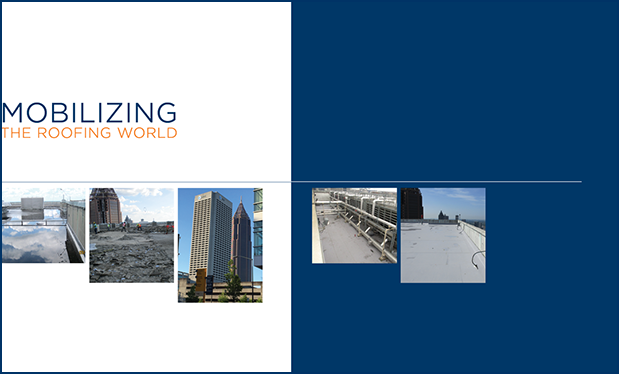Recently, changes have been made to the current model building and plumbing codes that may affect roof drains and roof drainage system design for low-slope roof systems. You should be aware of how these changes can affect your new construction and reroofing work.
Historical methods
The design of roof drainage systems, including roof drains, scuppers and gutters, traditionally has been addressed in the applicable plumbing code and generally is considered to be the responsibility of plumbing designers. For example, in the International Code Council®'s (ICC's) International Plumbing Code® (IPC), sizing of roof drains, scuppers and gutters—and any related conductors and leaders (drain piping, downspouts)—are addressed in Chapter 11-Storm Drainage.
Through the 2012 edition of the IPC, the sizing of roof drainage systems primarily was based on designing vertical conductors and leaders to accommodate a 100-year hourly rainfall rate or another rainfall rate determined from local weather data approved by the code official or other authority having jurisdiction. The IPC includes maps indicating the 100-year hourly rainfall rates expressed in inches.
In the International Building Code® (IBC), a statement is made in Chapter 15-Roof Assemblies and Rooftop Structures indicating the design and installation of roof drainage systems shall comply with the IPC.
Some jurisdictions may not adopt the same editions of the IPC and IBC. Other jurisdictions may adopt plumbing codes other than the IPC. Both scenarios can create difficulties and potential conflicts between the building and plumbing codes as they relate to roof drainage system design.
Recent changes
Beginning with the publication of the 2009 I-Codes and continuing to the current edition (2018 I-Codes), additional roof drainage requirements were added to the IBC's Chapter 15, including provisions requiring secondary drainage and for scuppers when they are used as secondary drainage. Secondary roof drains or scuppers are required when the roof perimeter extends above the roof surface in such a manner that water will be entrapped if the primary roof drains are clogged.
Because the IBC's provisions for reroofing require roof system re-cover and replacement comply with the same Chapter 15 requirements as for new construction (except minimum roof slope), it may be interpreted secondary roof drainage provisions need to be added in reroofing projects when the existing roof system does not already include secondary drainage.
Review of the code change proposal (ICC Code Change FS167-06/07) that added these provisions to IBC 2009's Chapter 15 shows applicability to reroofing situations was not intended.
In IBC 2015, a provision was added to Chapter 15's reroofing requirements indicating secondary drains or scuppers are not required to be added if they were not already present for roofs that do not pond water. This provision also appears in IBC 2018.
Also, beginning with IPC 2015, the method for sizing roof drainage systems now is determined by roof drain manufacturers' published flow rates based on a head (height) of water above the roof drain. The flow rate for conductors and leaders shall be based on the maximum anticipated ponding height at the roof drain.
What it means
The method for designing roof drainage systems has changed notably with the recent editions of the I-Codes. Generally, these changes result in the need for higher capacity roof drainage systems than those designed using historical methods.
Also, I-Codes' roof drainage design provisions related to reroofing situations is subject to possible misinterpretation.
NRCA has reviewed roof drain and drain insert manufacturers' product literature for their published flow rates and has surveyed manufacturers for design information necessary for complying with the current editions of the plumbing codes. Few (if any) manufacturers currently provide the information necessary for strict compliance with IPC 2015 or IPC 2018.
As a part of its ongoing code development process, ICC is considering a number of code change proposals intended to clarify and revise requirements for roof drainage system design. If accepted by ICC's membership, the revisions would first appear in the 2021 I-Codes.
Until the roof drainage provisions contained in the latest editions of the I-Codes can be appropriately clarified or revised, designers of roof drainage systems need to clearly define the extent and sizing of any intended roof drainage system work. Given the codes' current requirements and manufacturers' lack of code-compliant design information, performance-based statements simply indicating a design intent to comply with the applicable codes clearly are inadequate.
Designers of roof drainage systems can consult with the plumbing code official or the authority having jurisdiction for the code official's interpretation of the necessary requirements for roof drainage systems.
Mark S. Graham is NRCA's vice
president of technical services.
@MarkGrahamNRCA
This column is part of Research + Tech. Click here to read additional stories from this section.



